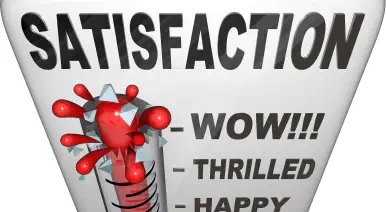Time to Train for Customer Service
Training is an integral part of a company’s success. In some companies, customer service training takes a month or more. Only then is an employee set loose on their own. The effectiveness of the training determines the amount of success new employees in customer service roles will have. A poor customer service training regimen, left unaddressed, will cause big problems in the future. Even companies that have solid training programs must continually re-evaluate to ensure relevance and effectiveness. Those companies that don’t keep a watchful eye on training run the risk of falling behind the competition.
Training programs are like eyesight — the negative changes can be so slight that you don’t realize you’re beginning to lose your edge. It’s a common trap because you aren’t experiencing a large or unusual spike in customer service issues. And thanks to social media and industry rumblings, you might think other companies are doing much worse, so there’s no immediate need to gather the troops. After all, there are likely several very pressing matters elsewhere in the company that need immediate attention. But routinely pushing customer service aside is how bad habits crop up. These bad habits can then be passed on through training typically in the form of “Oh you’re supposed to do this, but no one ever does.” Staying up to date with training programs and their implementation will remind everyone that every aspect of training is important. Or in some cases procedures may need to be revisited to increase their effectiveness.
From a customer’s perspective, poor training is easy to spot. Consumers have likely made plenty of purchases long before visiting your business. They can sniff out a hesitant employee very easily when they have a question or need assistance. Lack of authority in their voice, hesitation, or eagerness to pass them off to another employee are all very identifiable, and can put customers off because it makes the process longer. Training programs should instill confidence in employees. If not, it’s time to look at your program.
Your customers are the best judges to evaluate your customer service. Your own staff will see few flaws in your training because they designed it. But customers have the interactions your company needs to understand and evaluate to truly judge your business. At NBRI, we recommend using customer service surveys to evaluate your customer service, and by extension, your training programs. Then, re-survey periodically to evaluate the effectiveness of your improvement initiatives. Contact us today to ensure that your employees are well trained and your customers are satisfied.




























 By submitting this form you agree to our
By submitting this form you agree to our